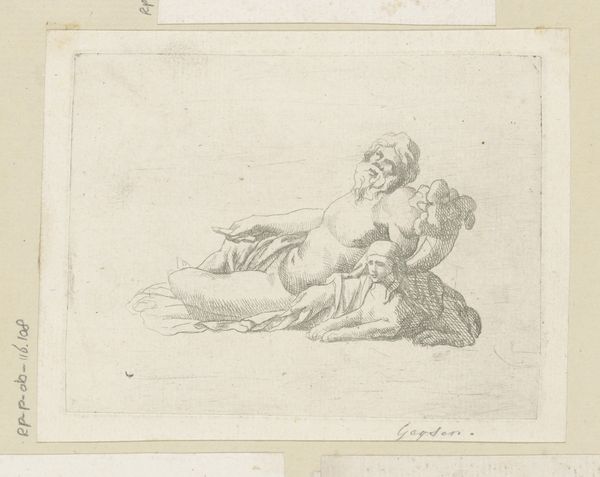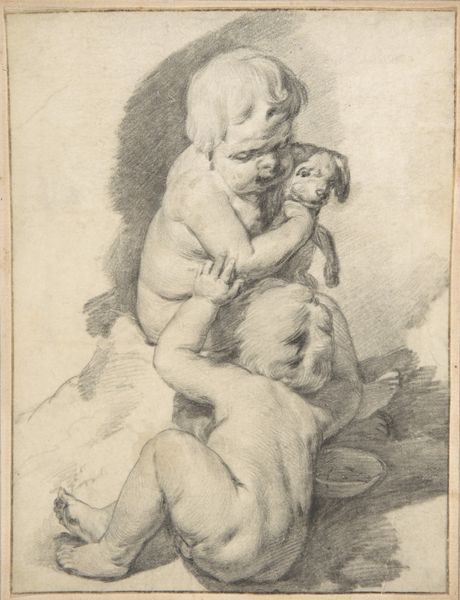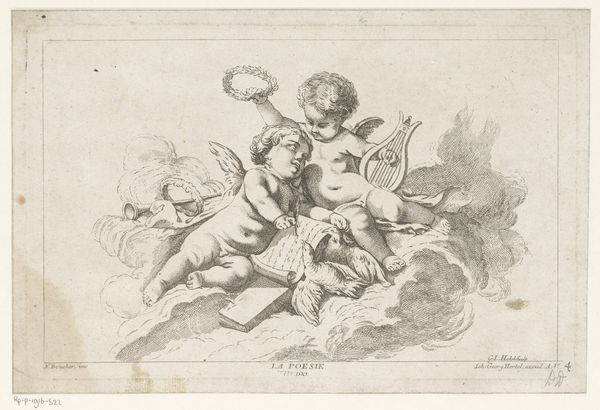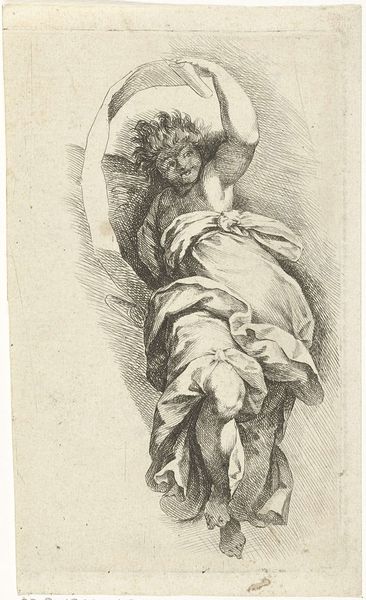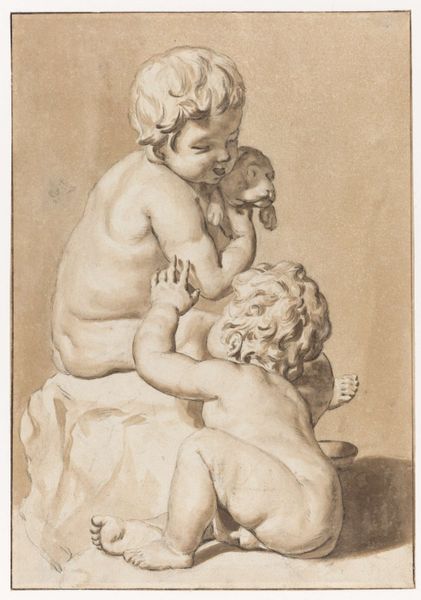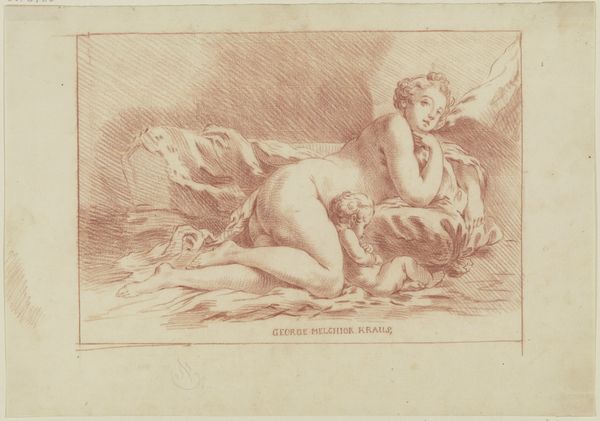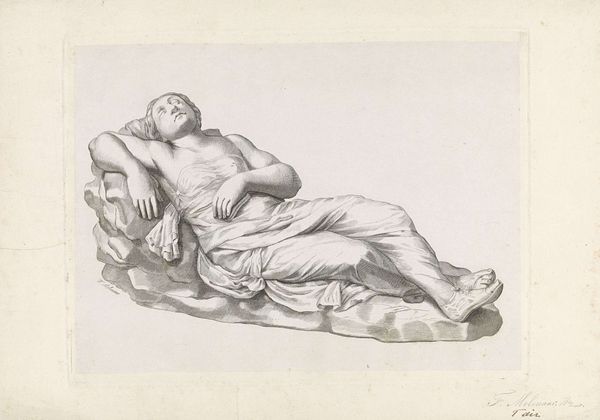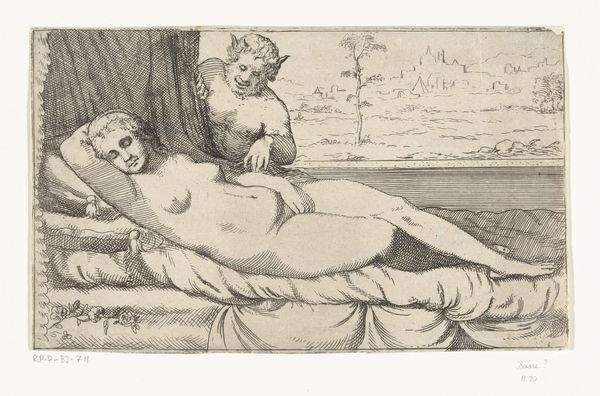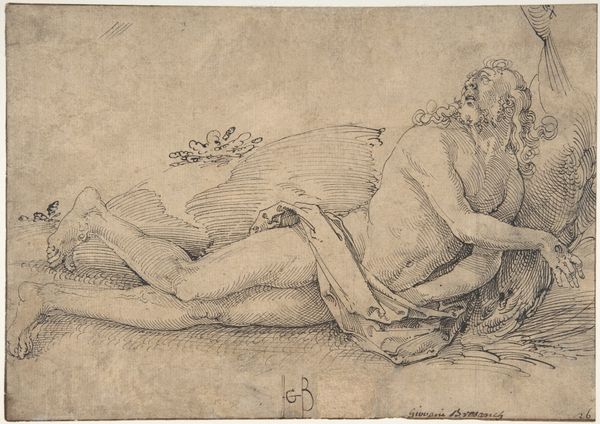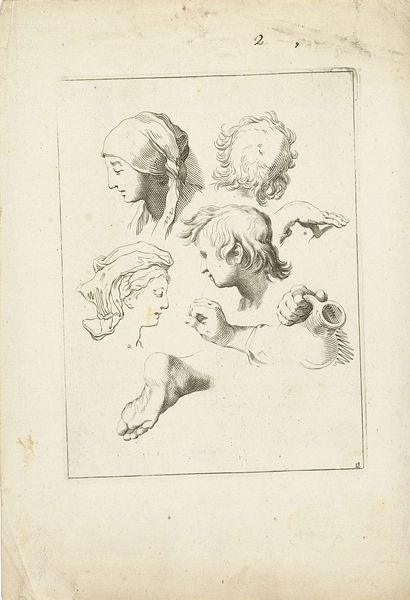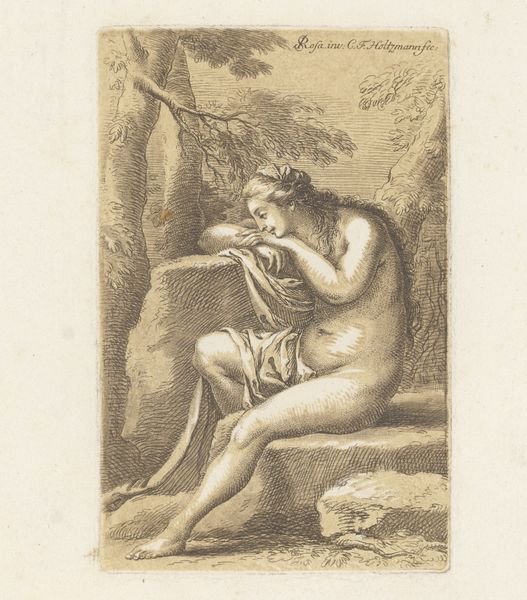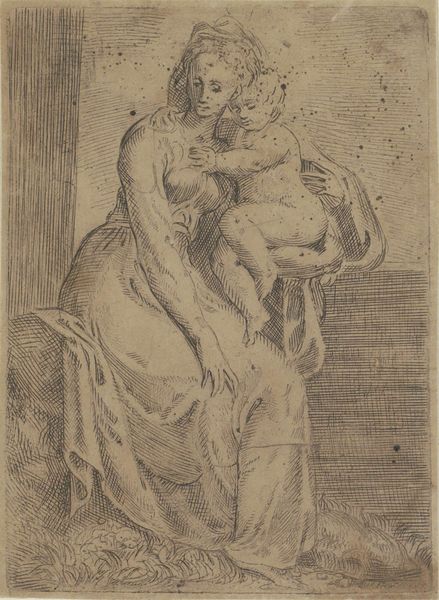
etching
#
allegory
#
baroque
#
etching
#
figuration
Dimensions: height 90 mm, width 117 mm
Copyright: Rijks Museum: Open Domain
Jan Verkolje the Younger made this print called 'River God and Sphinx' sometime in the late 17th or early 18th century. In it, a muscular, reclining figure is accompanied by a sphinx. The image is an example of the enduring fascination with classical antiquity during the Dutch Golden Age. Artists often turned to Greek and Roman mythology, imbuing their works with allegorical meaning. The river god signifies the importance of waterways to Dutch commerce and power. The sphinx, a symbol of wisdom and guardianship, may allude to the Dutch Republic's role as a protector of trade routes. Consider the context of the Dutch Golden Age, a period of immense economic and cultural expansion. Artists, like Verkolje, contributed to a sense of national pride and identity. Looking into archives of Dutch trading companies, we can understand the significance of rivers in the cultural imaginary of the time. Analyzing the iconographic tradition of river gods also illuminates the politics of imagery.
Comments
No comments
Be the first to comment and join the conversation on the ultimate creative platform.
